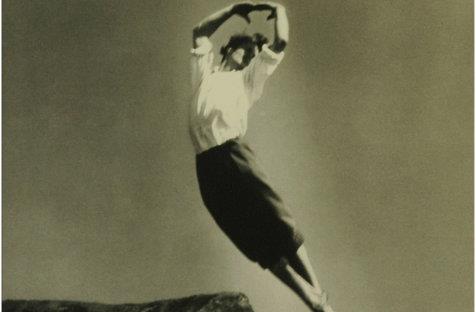‘By its theatres and its ballet company a country is known.’
Hot off the press from Wellington, the Royal New Zealand Ballet have produced this excellent book as part of their birthday celebrations. Lavishly illustrated, it is a medium sized ‘coffee table’ book, very well coordinated and edited. It includes poems and – most pleasing for dance scholars and academics – a well set out table of contents and a great index, as well as listing all the works performed by the company to date.
Particularly fascinating for this reviewer was the intertwining of New Zealand and Australian ballet history, with some famous names working in both countries, including Poul Gnatt, Graeme Murphy, Harry Haythorne, Amy Hollingsworth and Kristian Frederickson, just to name a few.
The book is divided into four main sections, with over 50 contributors. Part one is an overview of the company, which reveals the interesting observation that only two New Zealanders have served as Artistic Directors for the company so far (Russell Kerr and Bryan Ashbridge); the current Artistic Director, Ethan Steifel, is the second American to be in charge.
Much of the book is in the form of personal stories, collected memories and opinions. There is an excellent, extended opening chapter, a biography of the Royal New Zealand Ballet’s first Artistic Director, Poul Gnatt, which looks at his Danish heritage and the extensive Danish influence at that time on the company (continued later under successive Artistic Directors).
The breathless, whirlwind energy of the company’s second Artistic Director, Russell Kerr comes through in the section about his tenure. Later came Una Kai, who brought a stiffening, challenging, very different Balanchine influence. Another of the company’s inspirational leaders was Harry Haythorne, who – judging by the articles about him – was much loved.
In the other sections, hair-raising stories are told of various overseas tours (particularly one in China), a death-defying leap in the ballet Tis Goodly Sport where a ballerina almost was killed, and a drastic van crash, among other things.
Jon Trimmer tells many exiting tales in his chapter in the next section ‘Dancers and Choreographers’ and there is a terrific chapter by Patricia Rianne.
What I also found fascinating is the backstage work mentioned – e.g. the use of Benesh or Laban notation, as mentioned in ‘Scripting the dance’ by Peter Boyes. Choreographer Douglas Wright receives several mentions, as does principal dancer Ou Lu. There are also great insights into the work of the costume designers, music directors etc, as well as the Ballet’s School and Friends. Another section needing a special mention is the educational side of things now known as ‘Tutus on Tour’ (similar to the Australian Ballet’s ‘Dancer’s Company’). A theme running throughout the book is the company’s struggle for financial survival.
We have seen the Royal New Zealand Ballet several times here in Australia, though not nearly enough. One of their most popular ballets was Dracula, which toured to Melbourne; I last saw them in Wollongong with their Romeo and Juliet.
This detailed account of the company’s history and major personalities is marvellously researched, well written and beautifully presented. A delight for dance lovers, and a fascinating insight into the triumphs, pitfalls and hard work that goes into keeping a national ballet company alive. Start dropping hints for Christmas presents now.
Ei Blot Til Lyst (‘Not only for pleasure’). Happy birthday, Royal New Zealand Ballet!
The Royal New Zealand Ballet at 60
Edited by Jennifer Shennan and Anne Rowse
Hardcover, 210 x 240mm, 344pp, RRP $60.00
300 colour and black and white photographs
ISBN/SKU: 9780864738912
Published by Victoria University Press





